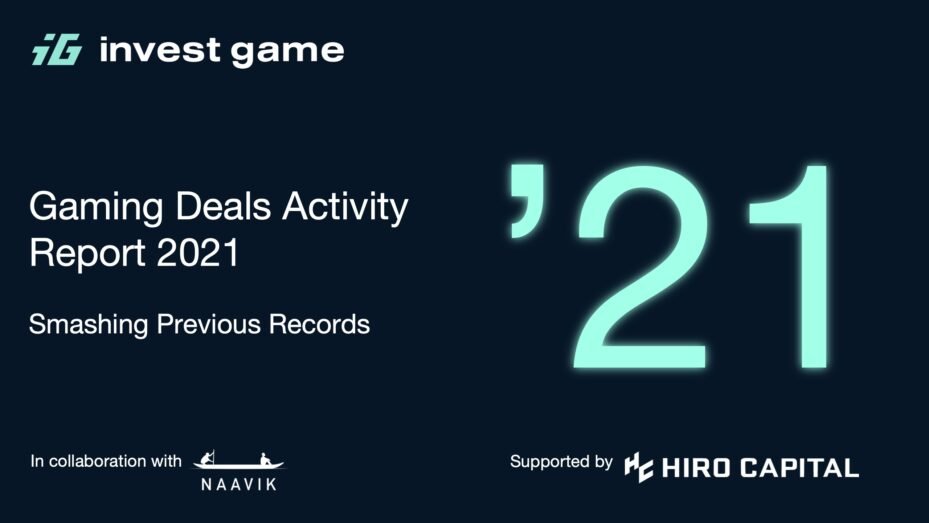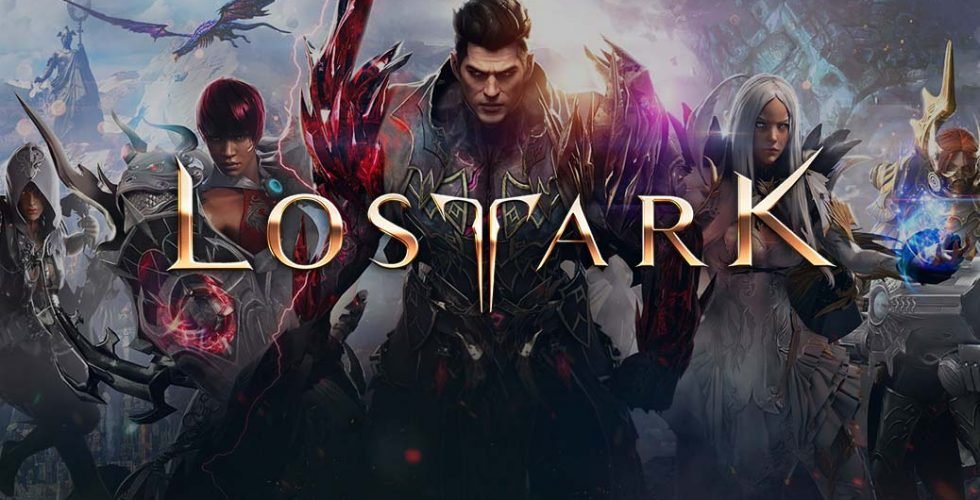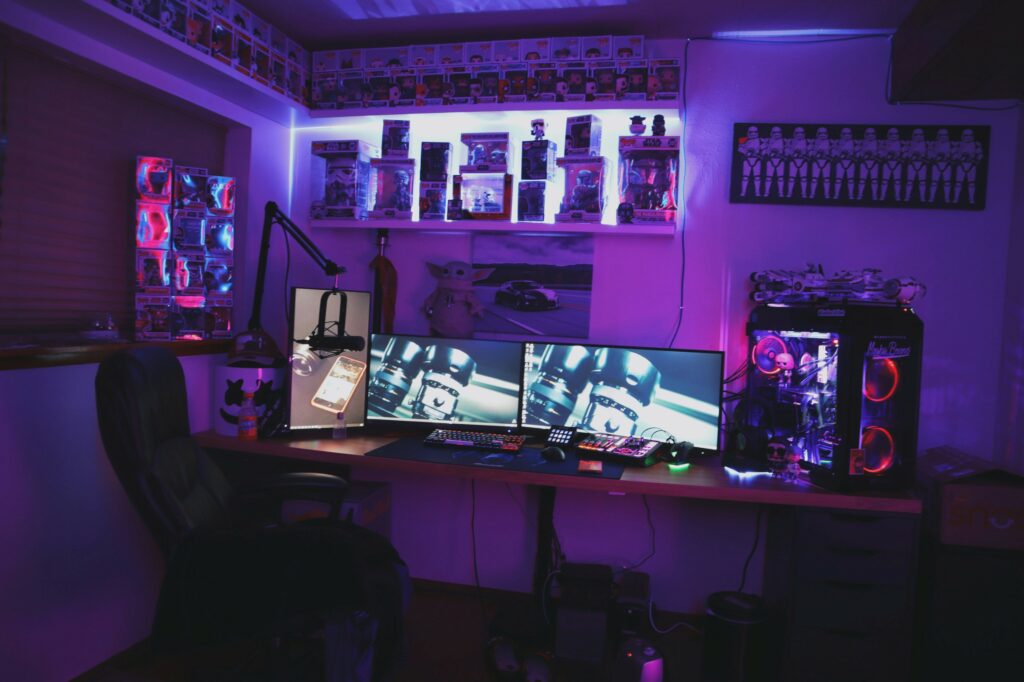Welcome back to another issue of Master the Meta. Last Sunday's most popular links included: Pixowl's studio Presentation, SuperJump's piece on Sony's history of supporting developers, and The Wall Street Journal's interview with Xbox head Phil Spencer. With that, let's jump into Wednesday's issue.
Crypto Corner #13 — Loot Pt. 2: Decentralized, Permissionless & Collaborative World Building
In this Metacast Crypto Corner episode, timshel, LordOfaFew and Threepwave, join your host Nico to take a deep dive into how world building happens within the Lootverse.
We talk about what the Lootverse is, what makes it special, who decides what ‘Canon’ is in Loot, what it means to build fully on-chain, and and much more.
If you’d like to discuss any other blockchain gaming-related topics, do reach out at [email protected]. We’d love to hear your general thoughts and feedback too! You can find us on Spotify, Apple Podcasts, Google Podcasts, our website, or anywhere else you listen to podcasts.
#1: InvestGame Gaming Deals Activity Report 2021
Source: InvestGame
2021 proved to be another record-smashing year for the gaming industry. The total closed deal value surpassed $71.3B across 937 transactions, with an additional $9.1B across 30 announced deals (not yet closed). The industry continued to grow across all segments and all types of deals through FY’21. Here’s a quick recap:
-
Exit activity remained bullish, with M&As setting a new record of $34.5B value (vs. $12.6B in 2020) across 309 closed deals. This represented almost half (48%) of the total deal value.
-
Private investments doubled in deal value ($12.0B vs. $5.9B in 2020), and made a healthy step up in the number of closed deals (560 vs. 363). Late-stage transactions accounted for 72% of deal value.
-
As for Public offerings, there was a 1.6x increase in deal value ($24.8 vs. $15.6B in 2020), while the number of transactions slightly declined (68 vs. 82). The three largest deals were KRAFTON Inc. $3.75B IPO, bilibili Group $2.6B PIPE, and ironSource $2.3B SPAC.
-
The investment focus also noticeably shifted to Blockchain gaming, with the segment occupying 26% of the private capital raised in FY’21. Blockchain gaming had a breakthrough year: the total deal value grew 68.1x YoY ($3.1B vs. $46M in 2020), with total deal count increasing 11.3x YoY (135 vs. 12).
On the funding side, FY’21 was also a remarkable year for the gaming VC ecosystem. Gaming-related funds raised $891M in capital throughout the year. The top-15 gaming VCs invested $4.3B of the disclosed deal value in FY’21 across 160 deals, showcasing an ever-growing venture interest in the gaming industry. BITKRAFT Ventures yet again led the VC chart with 30 closed deals and $345M total value, followed by Andreessen Horowitz and Makers Fund.
For the first time ever, Embracer Group nudged Tencent from the first place in the Strategics rating. They closed a total of 26 deals with an overall disclosed deal value of $6.7B. Notable deals include Asmodee Group ($3.1B), Gearbox Entertainment (up to $1.4B), and Easybrain (up to $0.8B).
While 2021 was a record year, 2022 has already seen three blockbuster deals in Activision, Zynga, and Bungie. Stay tuned for more.
(Written by InvestGame and Naavik. You can find more insights and data on the gaming deals in 2021 by following this link. )
#2: Breaking Down The Release of Lost Ark
Source: LostArk
ICYMI — Lost Ark set sail last week, making waves across the industry.
Developed by Smilegate RPG (a subsidiary of Korean conglomerate Smilegate) and published by Amazon Games, Lost Ark is a massive open-world action RPG. It combines the isometric camera angles and horde-based combat of games like Diablo and Path of Exile with the open-world exploration, raids, and fetch quests of traditional MMOs like World of Warcraft and Final Fantasy XIV.
Notably, Lost Ark is free-to-play, with its chance-based monetization tactics precluding it from operating in Belgium and the Netherlands. Despite this, Lost Ark has enjoyed a massively successful launch, becoming the second most played game launch in Steam history after just 24 hours.
Source: TwitchTracker, 2/14/22
Lost Ark’s early momentum has also been supported by prominent streamers. Asmongold, a well-known MMO streamer regularly topping the Twitch charts, posted his biggest stream ever with a peak viewership of over 285,000.
While it might seem like this game came out of nowhere, Lost Ark’s ambitious launch has actually been years in the making. Smilegate, a Korean games developer and publisher most known for the first person shooter Crossfire, initially began development on Lost Ark in 2011. The game eventually made its way to closed beta testing in 2016, with a formal launch in South Korea coming two years later in 2018. The game was subsequently released in Japan and Russia. This lengthy period of development and iteration is evident in the final product, as the game is extremely polished.
Amazon Games also played an important role in preparing the game for release in the West, helping to localize thousands of lines of text and voice dialogue, improving diversity in character creation and NPC representation, and updating “the business model to more closely align with Western norms and player expectations.”
Back when development of Lost Ark first began, Smilegate was riding a wave of momentum. At that point in the company’s history, Crossfire was already a massive success. Though the game may not be well-known among Westerners, Crossfire once boasted upwards of one billion users. The game would go on to expand into esports competitions, mobile spin-offs, and even television and movie adaptations.
The initial success of the Crossfire IP enabled Smilegate to rapidly expand into new territories globally via local publishing agreements: first to China and Japan, and quickly followed by North America, the U.K., Russia, and several Southeast Asian nations. The company also created new lines of business, and today operates several entities in addition to its core games business, such as a venture capital arm, a charitable foundation, and an AI center. The company has even developed its own virtual celebrity.
Source Smilegate
While it’s still quite early, Lost Ark appears to be following in the footsteps of Crossfire with its expanding international presence. Partnering with Amazon Games for Western publishing has certainly put the game on a fast track to massive user adoption, with Amazon’s Twitch and Prime Gaming tie-ins aiding with new user acquisition and increasing exposure to the game via streaming.
However, before we look ahead to Lost Ark’s future, it’s worth pausing a moment to consider the market it operates within. The MMORPG space is a crowded one, with many successful, long-running games commanding meaningful market shares.
With apologies to Lineage, Destiny, Elder Scrolls Online, and countless other IPs too numerous to mention
MMORPGs are one of the most expensive genres to develop and maintain, and one need only glance at the size of the companies operating in the space (Tencent, Blizzard, Square-Enix, etc.) to understand the level of competition.
World of Warcraft and Final Fantasy XIV have long been dominant players in the space and remain worthy of monitoring. Yet new competition is on the horizon, with Path of Exile 2 and Diablo IV both set for release in the next couple of years. Amazon Games also released its own internally developed MMORPG, New World, just a few months ago. Even within its home country of South Korea, Lost Ark faces stiff competition from incumbents like Black Desert Online (Pearl Abyss) and Lineage II (NCSOFT), both of which have extremely successful mobile versions in addition to their mainline PC and console entries.
In an essay surveying years of lessons learned on MMORPG business models, legendary game designer Raph Koster (Ultima Online, Star Wars Galaxies) categorizes the largest expenses for MMORPG makers into two buckets: development costs and servers.
While the development costs for Lost Ark are surely massive (previous sources pegged the game’s budget at $85.4M), Smilegate can perhaps leverage its publishing relationship with Amazon to compete on the “servers” part of that equation. After all, is there any company in the world better equipped to handle a massive investment in servers than Amazon? Furthermore, Amazon has already gone through one record-breaking global MMO launch with New World, and likely has many learnings on how to coordinate a launch campaign at scale across a variety of marketing channels and payment processors.
Another factor worth considering is the relative age of the competition. Among “The Big Five” MMORPGs identified by game critics (World of Warcraft, Final Fantasy XIV, Elder Scrolls Online, Black Desert Online, and Guild Wars 2), not one was released more recently than 2015 (unless we count mobile versions). Given how old these titles are, is it possible that the early successes of both Lost Ark and New World are less a function of their potential staying value, and more indicative of a stagnant MMORPG market ripe for disruption?
The truth is likely somewhere in the middle. Lost Ark is indeed a polished product with years of testing and international success behind it, so dismissing it outright would be foolish. While early player reviews have been mixed, this appears in part to be a byproduct of the game’s early success, with some users (particularly in Europe) experiencing long queue times to join servers.
Should Lost Ark maintain its current momentum (and avoid early pitfalls such as those suffered by New World), it will need to act quickly to establish a sturdier foothold in the market. MMORPGs are an engrossing genre, where the required time commitment to reach the endgame acts as a high switching cost for dedicated players. Winning titles must capitalize on this by meeting players where they are, allowing them to immerse themselves in the IP regardless of platform. This is evidenced among Lost Ark’s primary competitors, where nearly all have already expanded to consoles, mobile devices, or both.
Further, it is worth considering Lost Ark’s future through the lens of Smilegate’s past experiences with Crossfire. We’ve already discussed how both titles were initially released in South Korea and steadily grew over time through continued international expansion. Could we see Lost Ark continue to emulate the Crossfire model in other ways? Esports, transmedia, new games - these are all areas previously explored by Crossfire, as well as some of Lost Ark’s competitors in the MMO space (...anyone else remember the Warcraft movie?)
Regardless of where it goes next, Lost Ark has undoubtedly set itself up for future success. I will be watching closely to see how Smilegate and Amazon look to build on this early momentum. (Written by Matt Dion)
📚 Content Worth Consuming
How to Design Economies For Crypto Games (Department of Play): “Tokenomics … defines the interaction between various blockchain and decentralised technologies. When theoretically perfect, a game’s tokenomics align the motivations of various parties; from creating a profit for a developer, in a simple model, all the way to being the defining aspect of fully decentralised and autonomous projects with millions of participants and billions of dollars in market capitalisation. In crypto games we are aligning the motivations of these developers, players and investors – all of whom may take distinct profits from the running of a single game . However, it is increasingly clear that these roles are complex and blurred: Players become investors, investors may also develop aspects of the game and so on. So we can consider each participant as having a quotient of each motivation, similar to Bartle types.” Link
A 2021 Journey from Oregon Trail to A.I Dungeon (50 Years of Text Games): “The earliest version of The Oregon Trail—made long before the green-tinged ports known by subsequent generations from their school computer labs—was first played by students in a Minnesota classroom on December 3, 1971. It's now 2021, so the end of this year will mark the 50th anniversary of that influential game. In the past half-century, text games have gone from being the only kind of interactive digital game there was, to mainstream successes, to underground indie experiments, to viral web phenomena, to word-of-mouth hits on new generations of platforms that couldn’t even have been imagined in that 1971 winter. In the process they’ve explored countless ways that stories can be dynamic, debuted influential creators who've gone on to success in the wider gaming or publishing industries, and been a constant source of inspiration as sole creators have redefined what games made of words can do, mean, and be, over and over again.” Link
2021 — The Explosion of GameFi Era (GMC): “Before the Axie Infinity boom this summer, the concept of GameFi had been around for a while but not many people were aware of it. The pandemic situation, the play-to-earn model, the migration to the Ronin sidechain have been the pieces at the right place, the right time and they all contributed to the essential first steps of the GameFi craze in 2021.2021 marked the adoption of GameFi as many Game-oriented blockchain services were developed and introduced, creating a foundation for capital to flow in this industry. In this report, we highlight the ecosystem landscape of GameFi on different blockchains, the funding situation and the services of the year namely Launchpads and Guild models.” Link
Three Technologies That Will Shape The Metaverse — And Human Experience (WEF): “The third definition is compelling in part because it focuses on those who will actually build and use the metaverse: people. Answering questions about how the metaverse might look and feel —rather than pondering about its features—could prove a useful viewpoint to predict the wave of socioeconomic change that the metaverse is expected to unleash. After all, the future is built by ruthless pragmatists; not the armchair theorizers who ‘meander the forest of their own words’.” Link
🔥 Featured Jobs
-
Mighty Bear Games: Senior Technical Artist (Singapore)
-
Mighty Bear Games: DevOps Engineer (Singapore)
-
Proxima: Head Of Decentralized Economies (Remote)
-
Beamable: Product Manager, LiveOps Portal (Remote)
-
Guild of Guardians: Head of Partnerships (Remote)
-
Polygon Studios: VP Gaming (Remote)
-
Ello Technology: Lead Unity Engineer (SF; Remote)
-
Naavik: Content Contributor — Writer (Remote)
You can view our entire job board — all of the open roles, as well as the ability to post new roles — below.
Thanks for reading, and see you next week! As always, if you have feedback let us know here.














